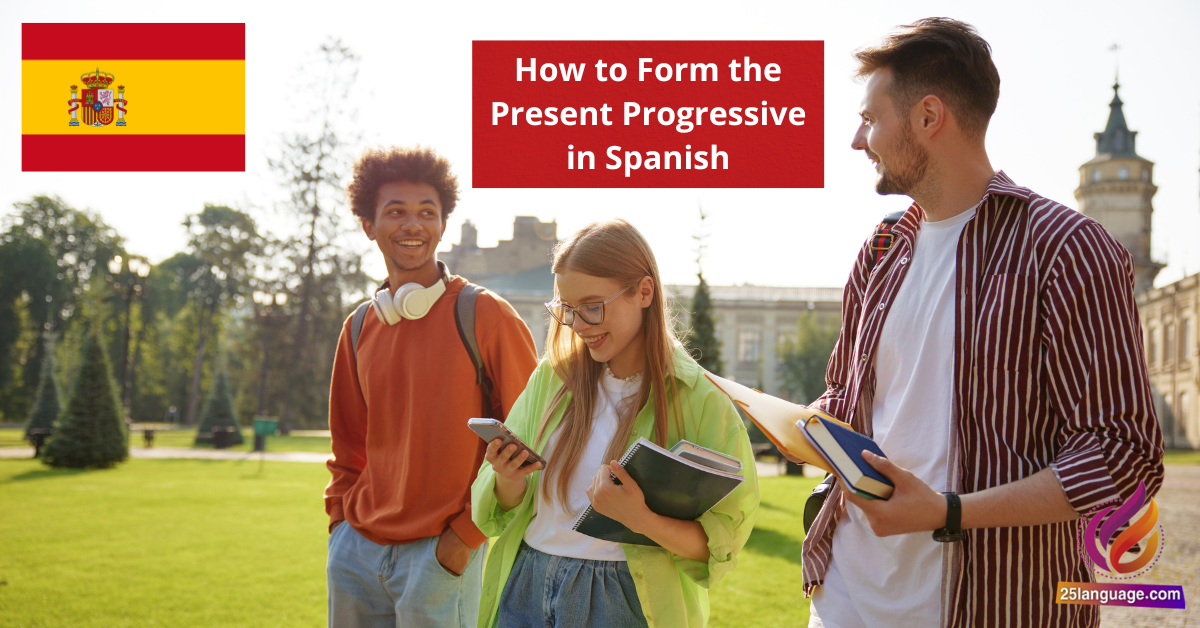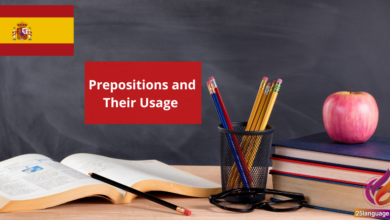How to Form the Present Progressive in Spanish

Imagine describing what you’re doing right now in Spanish! Teh present progressive tense lets you express ongoing actions, making your conversations more dynamic and engaging. In this lesson,we’ll unlock the secrets of forming the present progressive by combining the verb “estar” with gerunds. Get ready to enhance your Spanish skills and bring your sentences to life as we explore how to talk about what’s happening in the moment!
Mastering the Present Progressive in Spanish: A Comprehensive Guide
The present progressive tense in Spanish is used to describe actions that are currently happening or ongoing. It is formed by using the verb “estar” in the present tense followed by a gerund (the equivalent of the “-ing” form in English). The structure is:
- Subject + conjugated form of “estar” + gerund.
For example:
- Yo estoy hablando. (I am speaking.)
- Tú estás comiendo. (You are eating.)
- Ellos están escribiendo. (Thay are writing.)
To form the gerund, regular verbs change as follows:
- For -ar verbs, add -ando (e.g., hablar → hablando).
- For -er verbs, add -iendo (e.g., comer → comiendo).
- for -ir verbs, also add -iendo (e.g., vivir → viviendo).
| Spanish Example | English Translation | Rule |
|---|---|---|
| Nosotros estamos bailando. | We are dancing. | Subject + estar + gerund (-ando for -ar verbs) |
| Ella está leyendo. | She is reading. | Subject + estar + gerund (-iendo for -er verbs) |
| Ustedes están durmiendo. | you all are sleeping. | Subject + estar + gerund (-iendo for -ir verbs) |
Understanding the Formation and Use of Present Progressive in Spanish
the Present Progressive, known as “el presente progresivo” in Spanish, is used to describe actions that are currently happening at the moment of speaking. It is formed by combining the verb “estar” (to be) with the gerund form of the main verb. The gerund in Spanish is created by taking the infinitive verb and modifying it: for -ar verbs, replace -ar with -ando; for -er and -ir verbs, replace -er/-ir with -iendo. For example:
- Hablar</ (to talk) → Hablando (talking)
- Correr</ (to run) → Corriendo (running)
- Escribir</ (to write) → Escribiendo (writing)
To construct a sentence in the Present Progressive, you would begin with the appropriate conjugation of “estar” followed by the gerund.As an example:
- Yo estoy hablando. (I am talking.)
- Tú estás corriendo. (You are running.)
- Él está escribiendo. (He is writing.)
Hear is a table summarizing the formation and use of the Present Progressive:
| Spanish Example | Present Progressive Formation | English Translation |
|---|---|---|
| Yo estoy bailando. | Yo + estoy + bailando | I am dancing. |
| Nosotros estamos comiendo. | Nosotros + estamos + comiendo | We are eating. |
| Ellas están leyendo. | Ellas + están + leyendo | They are reading. |
Engaging with Action: Practical Tips for the Present Progressive in Spanish
The present progressive tense in Spanish, known as “el presente progresivo,” is utilized to describe actions that are currently happening at the moment of speaking.This tense is formed by combining the verb “estar” (to be) with the gerund (present participle) of the main verb. To create the gerund, regular verbs typically follow these rules:
- For -ar verbs, drop the -ar and add -ando. (e.g., hablar → hablando)
- For -er verbs, drop the -er and add -iendo. (e.g., comer → comiendo)
- For -ir verbs, drop the -ir and add -iendo. (e.g., vivir → viviendo)
For example, if you want to say “I am speaking,” you would say “Yo estoy hablando”. Similarly, “They are eating” translates to “Ellos están comiendo”, and “She is living” would be “Ella está viviendo”. It’s vital to remember that the subject pronoun (yo, tú, él, etc.) is sometimes omitted in Spanish since the verb conjugation often makes it clear who is performing the action.
| Spanish Example | English Translation |
|---|---|
| Yo estoy hablando | I am speaking |
| Ellos están comiendo | They are eating |
| Ella está viviendo | She is living |
| nosotros estamos estudiando | We are studying |
Along with basic usage, it’s useful to understand some common irregular gerunds. Verbs like “decir” (to say) become “diciendo,” and “ir” (to go) becomes “yendo.” These forms shoudl be memorized since they don’t follow the regular patterns. Here’s a short list of irregular gerunds:
- decir → diciendo
- ir → yendo
- repetir → repitiendo
- poder → pudiendo
Utilizing the present progressive allows for dynamic conversations in Spanish while describing ongoing actions, making your communication more vivid and engaging.
Step into the Now: Clear Examples of Present Progressive in Spanish
The present progressive tense in Spanish,known as “el presente progresivo,” is used to describe actions that are currently happening.This tense is formed by combining the verb “estar” with the present participle of the main verb. the structure is: estar + gerundio. For example:
- Estoy comiendo. (I am eating.)
- Estás leyendo. (You are reading.)
- Él está estudiando.(He is studying.)
To form the gerund, you typically take the infinitive verb and modify it as follows: for -ar verbs, you replace -ar with -ando (e.g., hablar → hablando), and for -er/-ir verbs, you replace -er/-ir with -iendo (e.g., comer → comiendo, vivir → viviendo). Here are some additional examples:
| Spanish Example | english Translation |
|---|---|
| Nosotros estamos jugando. | We are playing. |
| Estás caminando por el parque. | You are walking through the park. |
| Ellos están trabajando mucho. | They are working hard. |
In Retrospect
¡hemos llegado al final de nuestra lección sobre cómo formar el presente progresivo en español! Hoy hemos aprendido que esta estructura se forma utilizando el verbo “estar” en el presente seguido del gerundio del verbo principal. Recuerda que el gerundio se crea al añadir -ando para los verbos que terminan en -ar y -iendo para los que terminan en -er e -ir. Esta forma verbal nos permite expresar acciones que están ocurriendo en este momento, lo cual es essential para mejorar tu habilidad de comunicación en español.
Ahora que ya conoces las bases del presente progresivo, te animamos a practicar. Intenta describir lo que tú y la gente a tu alrededor están haciendo en este preciso instante. Puedes hablar sobre actividades cotidianas, pasatiempos o incluso lo que estás haciendo en el momento de hablar.Recuerda que la práctica es clave para dominar una nueva lengua. No dudes en integrarlo en tu conversación diaria. Cada pequeño esfuerzo cuenta, y con el tiempo, verás cómo tu confianza y fluidez mejoran notablemente.
Sigue adelante, ¡estás haciendo un gran trabajo! ¡Hasta la próxima lección!





























